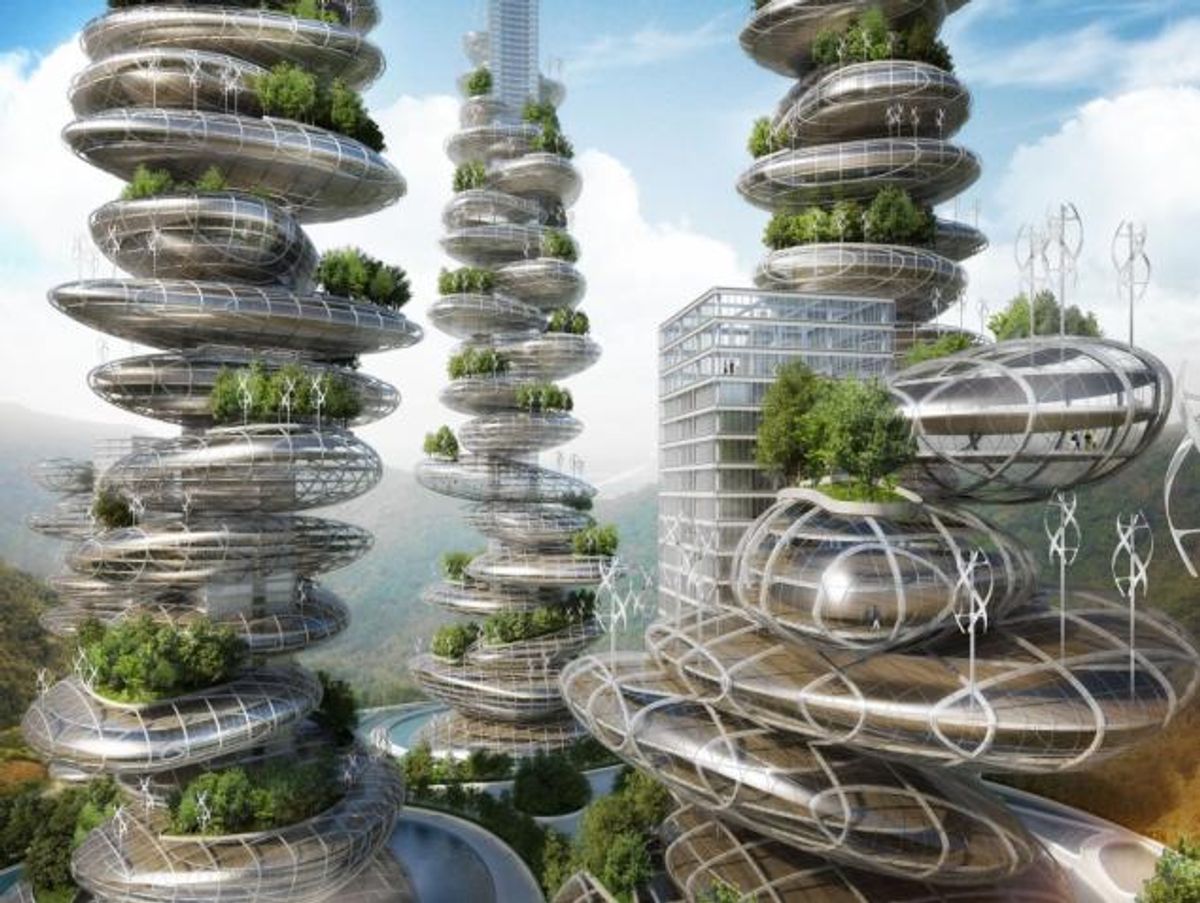 One of the advantages of living in a city is that the urban environment is in many ways more sustainable than suburbia — mass transit provides easy access to different areas without cars or highways, and dense planning efficiently fits more people into less space. But the quintessential architectural unit of the city, the skyscraper, isn’t always the greenest method of building. Enter “farmscrapers,” a new creation by the France and Belgium-based firm Vincent Callebaut Architects.
One of the advantages of living in a city is that the urban environment is in many ways more sustainable than suburbia — mass transit provides easy access to different areas without cars or highways, and dense planning efficiently fits more people into less space. But the quintessential architectural unit of the city, the skyscraper, isn’t always the greenest method of building. Enter “farmscrapers,” a new creation by the France and Belgium-based firm Vincent Callebaut Architects.

Detail of a farmscraper unit (Image courtesy Vincent Callebaut Architects)
“Farmscraper” is the term they invented for a plan of six skyscrapers, deemed “Asian Cairns,” created for Shenzhen province in China. The towering structures are divided into ovular, blob-like sections that look like rocks smoothed by years in running water. Each blob plays host to a miniature forest of trees and grass, along with wind turbines and solar cells. Each farmscraper measures 1,300 feet high and has 111 floors, reportsNew York Daily News.
The farmscrapers are designed to act as self-contained ecosystems: The water created and collected by the planted farms will be recycled for use within the building. The farms will not necessarily produce food to sustain the community, but they will improve the city’s legendarily bad air quality. Each pebble unit will also contain a mixture of office, residential, and recreational space. By mingling efficient density with green design strategies, Callebaut is developing an architectural solution for China’s booming urban expansion. “In this context of hyper growth and accelerated urbanism, the Asian Cairns project fights for the construction of an urban multifunctional, multicultural and ecological pole,” the firm explained on World Architecture News.

Close-up of a farmscraper (Image courtesy Vincent Callebaut Architects)
Callebaut’s design may still be theoretical, but the plan to integrate environmentally friendly technology into skyscrapers has already been realized in many buildings. Milan’sBosco Verticale towers are residential towers with trees growing on modular balconies on the outside of each unit. The design would spread one hectare of forest across 27 floors,according to FastCo, while only adding five percent on to the construction costs. Harmonia 57’s Triptyque development in Sao Paulo, Brazil, embeds plants within its concrete walls.

MAD’s Urban Forest (Image courtesy inhabitat.com)
The Chinese firm MAD Architects has also design an “Urban Forest” for Chongqing. The building’s twisting, rounded slices are reminiscent of high modernism, but each level also hosts large areas of trees, similar to the farmscraper plan. It’s a way of bringing green space into an urban setting while retaining the city’s penchant for packing as much as possible into a tight space.



Shares